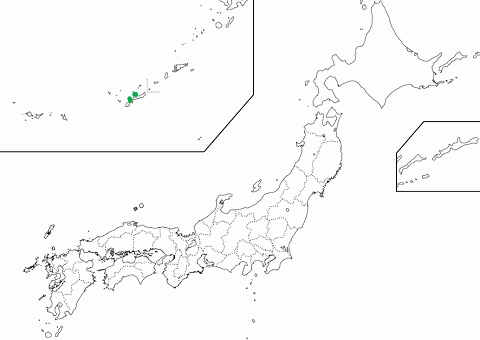Terrestrial Manganese Nodule
Chemical Process (Liquid-phase growth) - Ground surface
Synonym
Hijah-Kus (Hijah = Goat, Kus = feces), Dida-Buhu (Dida = the Sun, Buhu = unknown, Ie island), Ishidane (Ishi = Stone, Dane = Seed, Sesoko island), Ru-nu-Kus (Ru = Dragon, Kus = feces, Yomitani-Oki)
Required Geological Setting
Tropical climate
Occurrence
Mn-Fe nodules formed in Shimajiri mahji, the weathered soil of the Pleistocene Ryukyu limestone. The Ryukyu limestone is a shallow marine sediments mainly composed of hermatipic corals. Nodules are not oberved in Kunigami mahji, the weathered soil of such sedimentary rocks as sandstone mudstone, and shale. Shimajiri mahji is neutral to alkaline, and noduleds were formed in this weakly reductive environment. Nodules are generally globules a few cm to a few mm in diameter and tabular ones are also reported. Concentric structture is observed in a nodule, and core is observed very rarely as a very small rock fragment. Mn-Fe nodules grew 60 mm per a million years. Large nodules are concentrated on the surface or in a zone of tens cm depth, but smaller nodules less than 1mm distribute widely. Nodules are composed of Fe and Mn with minor Cu, Zn, and Ni. Formation process of this type of Mn-Fe nodules is under discussion. It may be formed in Shimajiri mahji under terrestrial circumstance, or in Shimajiri mahji under seawater.

Distribution of terrestrial manganese nodule described in this site.
Mineral Assemblages
Todorokite, Birnessite, Lithiophorite, Goethite, Illite, Kaolinite, Gibbsite, Quartz, Vermiculite, Vermiculite-Chlorite interstratified mineral
Localities
- Oyakebaru
- Yomitan
- Toyohara
- Minami-Sesokobaru
- Ominebaru
- Uza